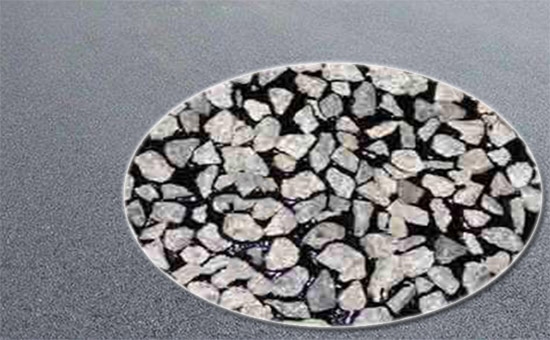
The use of waste tire rubber powder with a certain degree of fineness obtained by crushing automobile waste tires for road paving can achieve the dual functions of reducing costs and improving road performance. So can all waste tire rubber powder be used in road paving? Faced with many rubber powder products on the market, what issues should be paid attention to during the purchase process? What technical requirements does the road paving place on the waste tire rubber powder? The editor today shared with you the classification and selection criteria of road tire rubber powder.
1. Waste tire rubber powder classification
(1) Waste tire rubber powder can be divided into low temperature freezing method to crush waste tire rubber powder and normal temperature method to crush waste tire rubber powder according to the rubber powder crushing process.
(2) According to whether the rubber powder has undergone activation pretreatment, it can be divided into road waste tire rubber powder and road modified waste tire rubber powder. Among them, the waste tire rubber powder for road use is the waste tire rubber powder that meets the technical requirements for road road use. Waste tire rubber powder for road treatment.
(3) Waste tire rubber powder is usually divided into the following three categories according to fineness.
Type Ⅰ rubber powder: particle size below 30 mesh (inclusive) (0.60mm and above);
Ⅱ rubber powder: particle size is between 30-80 mesh (inclusive) [0.6mm-0.18mm (inclusive)];
Ⅲ type rubber powder: the particle size is between 80-200 mesh (inclusive) [0.18mm-0.075mm (inclusive)].
2. Technical requirements of road tire rubber powder
(1) Appearance: Select waste tire rubber powder for road use. It is required that the waste tire rubber powder has a uniform particle size and does not contain visually visible impurities; the fibers in the waste tire rubber powder should not be agglomerated, and there should be no woven fiber particles.
(2) Physical indicators: For waste tire rubber powder for road use, the sieve residue content should not exceed 10%, the relative density should be between 1.1-1.3, the water content should be less than 1%, the iron content should be less than 0.03%, and the fiber content should be less than 1 %.
(3) Chemical properties: When waste tire rubber powder is used for road paving, the ash content of rubber powder should be ≤8%, the content of acetone extract ≤16%, the content of carbon black ≥28%, the content of rubber hydrocarbon ≥48%, and the solubility ≥16 %.
Waste tire rubber powder can be used as a modifier of rubber asphalt in asphalt pavement laying. The various physical indicators and chemical properties of waste tire rubber powder directly affect the road performance of rubber asphalt. In the process of road paving, waste tire rubber powder with appropriate indicators must be selected according to actual needs. If necessary, the performance of rubber powder can be specifically tested, such as sieve residue test, relative density test, fiber content test, solubility test, etc. The test method can refer to the latest national standard of "JT / T 797-2019 Road Tire Rubber Powder".
Controlling the quality of waste tire rubber powder for roads and choosing appropriate blending schemes can further extend the service life of roads; continuous in-depth research on the application of waste tire rubber powder in road asphalt can reduce costs, improve pavement performance, and promote the recycling of waste rubber. The development of circular economy is of great significance.
Exclusive original article [commercial authorization] reprint, excerpt and excerpt in any form are prohibited without written authorization. Focus on Hongyun rubber: learn the process formula and raw material technology of producing rubber products from recycled rubber to help you reduce costs and increase profits